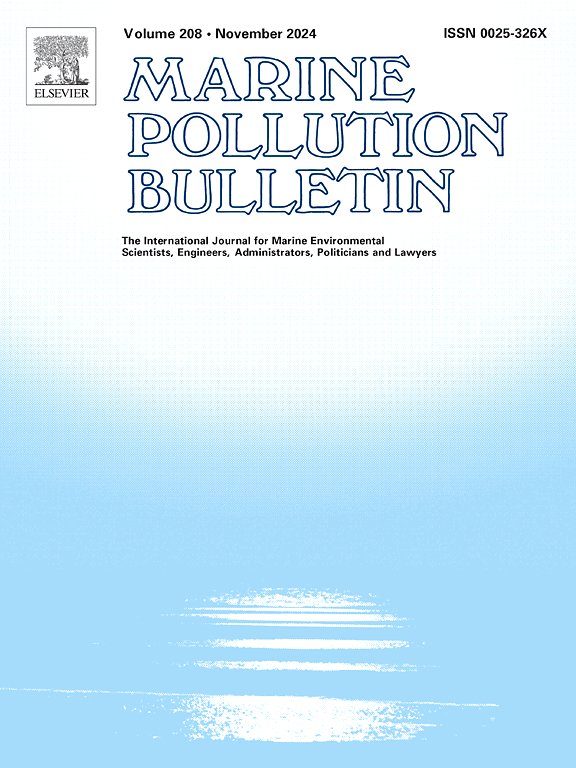在核浪潮中航行:对放射性污染物海洋污染管理的挑战、机遇和进展的全面回顾
IF 5.3
3区 环境科学与生态学
Q1 ENVIRONMENTAL SCIENCES
引用次数: 0
摘要
2011年福岛第一核电站(FDNPP)灾难导致放射性核素广泛释放到海洋环境中,自那以来,人们一直关注与此类事件相关的长期生态和人类健康风险。本文综述了海洋生态系统中存在的铯-137、锶-90、钚同位素和氚等主要放射性核素的来源、转运机制及其对环境的影响。污染的经济后果和执法上的差距凸显了建立强有力的监管框架的必要性。探讨了核废水处理技术的进展,重点是吸附、膜过滤、生物修复、植物修复、离子交换、先进液体处理系统(ALPS)和混合方法。使用纳米材料、介孔二氧化硅和基于废物的吸附剂的吸附显示出高的放射性核素去除效率,而膜技术,如反渗透和正向渗透,提供了有前途的解决方案,特别是在氚分离方面。结合吸附和膜过滤的混合系统由于其可扩展性和提高放射性核素回收率而成为最有效的处理策略。SWOT对比分析强调了每种技术的优势和局限性,强调了对实际应用、预测建模和持续监控的持续研究的必要性。本综述还探讨了先进的建模技术,包括流体动力学模拟和放射性核素扩散模型,以评估污染物的扩散和生物积累模式。此外,还分析了国际监管框架,包括国际原子能机构(IAEA)的准则和有关核废水处理的国家政策。海洋核电站和朝圣者核电站的案例研究为处理应用和风险降低提供了实际的见解。这些发现强调了通过技术创新、监管改进和跨学科合作实现可持续核废水管理的迫切需要。该审查可作为未来研究和政策制定的基础,旨在最大限度地减少与向海洋生态系统排放放射性废水有关的环境和公共健康风险。本文章由计算机程序翻译,如有差异,请以英文原文为准。
Navigating the nuclear tide: A comprehensive review of challenges, opportunities, and advances in managing marine contamination by radioactive contaminants
Since the 2011 Fukushima Daiichi Nuclear Power Plant (FDNPP) disaster, which resulted in the widespread release of radionuclides into the marine environment, there have been ongoing concerns about the long-term ecological and human health risks associated with such events. This review investigates the sources, transport mechanisms, and environmental impacts of key radionuclides, including cesium-137, strontium-90, plutonium isotopes, and tritium, which persist in marine ecosystems. The economic consequences of contamination and gaps in enforcement highlight the need for robust regulatory frameworks. Advancements in nuclear wastewater treatment technologies are explored, focusing on adsorption, membrane filtration, bioremediation, phytoremediation, ion exchange, the Advanced Liquid Processing System (ALPS), and hybrid approaches. Adsorption using nanomaterials, mesoporous silica, and waste-based adsorbents demonstrates high radionuclide removal efficiency, while membrane technologies such as reverse osmosis and forward osmosis offer promising solutions, particularly for tritium separation. Hybrid systems integrating adsorption and membrane filtration emerge as the most effective treatment strategies due to their scalability and enhanced radionuclide recovery. A comparative SWOT analysis underscores the advantages and limitations of each technology, emphasizing the need for continued research into real-world applications, predictive modeling, and continuous monitoring. The review also examines advanced modeling techniques, including hydrodynamic simulations and radionuclide diffusion models, to assess contaminant dispersion and bioaccumulation patterns. Additionally, international regulatory frameworks, including guidelines from the International Atomic Energy Agency (IAEA) and national policies on nuclear wastewater disposal, are analyzed. Case studies from the Haiyang and Pilgrim Nuclear Power Stations provide practical insights into treatment applications and risk mitigation. These findings highlight the urgent need for sustainable nuclear wastewater management through technological innovation, regulatory improvements, and interdisciplinary collaboration. This review serves as a foundation for future research and policy development aimed at minimizing environmental and public health risks associated with radioactive wastewater discharge into marine ecosystems.
求助全文
通过发布文献求助,成功后即可免费获取论文全文。
去求助
来源期刊

Marine pollution bulletin
环境科学-海洋与淡水生物学
CiteScore
10.20
自引率
15.50%
发文量
1077
审稿时长
68 days
期刊介绍:
Marine Pollution Bulletin is concerned with the rational use of maritime and marine resources in estuaries, the seas and oceans, as well as with documenting marine pollution and introducing new forms of measurement and analysis. A wide range of topics are discussed as news, comment, reviews and research reports, not only on effluent disposal and pollution control, but also on the management, economic aspects and protection of the marine environment in general.
 求助内容:
求助内容: 应助结果提醒方式:
应助结果提醒方式:


